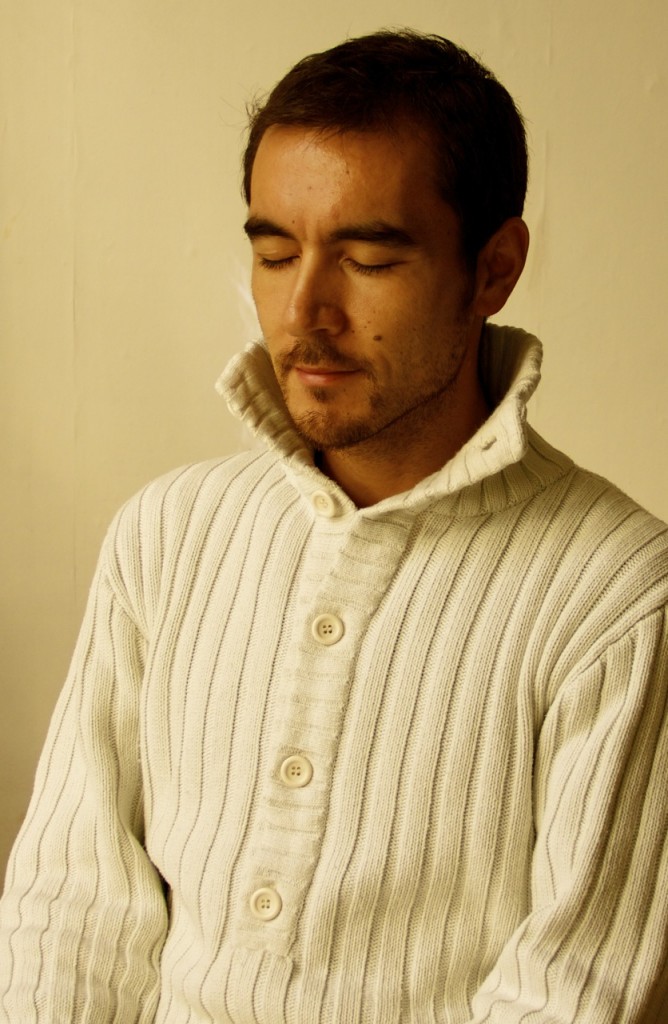Meditation
 The word meditation covers a wide range of methods and techniques from many wisdom traditions. Buddhist, esoteric, Zen and meditations from the yoga tradition, to name a few.
The word meditation covers a wide range of methods and techniques from many wisdom traditions. Buddhist, esoteric, Zen and meditations from the yoga tradition, to name a few.
The principal meditation technique taught by Ken is very simple and practical. It is based on using your attention and awareness, preceded by simple pranayamas (breathing exercises) leading to deep relaxation and stillness of body and mind. This is basically the ground for increased awareness and further into a state of expanded consciousness.
The process is easy and simple, the mind effortlessly establishing itself in its natural and most profound state. This is ever deeper silence and stillness. When the mind is not busy and overburdened (do you recognize the conveyor belt of thoughts going on?..), it naturally becomes settled and quiet. How is this natural? The mind has two directions of search or desire. Inwardly – becoming less and less. This is the process of involution, going towards the innermost Self. And outwardly – the search for more and better. This the process of evolution, development and growth. They are both an expression of our search for true lasting happiness and joy and its the balance between these two that is paramount.
In deep meditation, all unnecessary, non-essential mind-stuff is gradually fading away. In this state, we are the simple direct experience of just ”being”, a state of pure consciousness. One feels the mental chatter and internal restlessness diminishing, rendering the mind quiet. Yet its awake and alert, not complacent or simply “chilled”. This allows the mind to rest deeply, regaining its natural spaciousness, purity and calm.
When practiced regularly, meditation gives rise to:
- Profound mental rest – a ”time out” for the mind
- Increased mental and physical capacity
- Improved physiological recovery (physiological processes are at a very low level, including decreased heart rate)
- Inner peace and calm – also maintained during daily activities
- More happiness & joy (yes happiness IS our natural state)
- A “healthier” better working brain, increased capacity for empathy and compassion
- First the experience, then the realization of our innermost, true self
Through meditation we also recognise that we are not our thoughts. Thoughts are merely a process of the mind, a happening. We can observe our thoughts, sitting silently and witness them. Like a spectator not taking part in the show. If we are not our thoughts, feelings and mental projections then what or who are we? This leads us to the classic question of the ancient seekers, Who Am I? It becomes an invitation to enquire, to self-investigate and explore within. The so called work of the seeker, wanting to realize his or her true Self has begun. Its a journey of self discovery.
When meditation is practiced regularly in combination with the self investigation – Who Am I?, this hopefully brings us the experience and realization of our true higher Self. It is that which you are beyond your name, title, social status, age, physical body, thoughts, feelings and beliefs. That which you truly believe to be your core being, your very essence.
This awakening is one of the highest goals on the spiritual path and whole process of Yoga. It is expressed when a person is extraordinarily awake and aware.
“We know how to take care of the body, but very few people have learned how to maintain optimal health of the mind, even though it is very important. Everybody can learn how to meditate, and in the busy modern world we need it more than we know. Meditation gives you clarity, inner calm and peace, increased mental and physical capacity – and makes you happier.”
– Ken Kiriyama